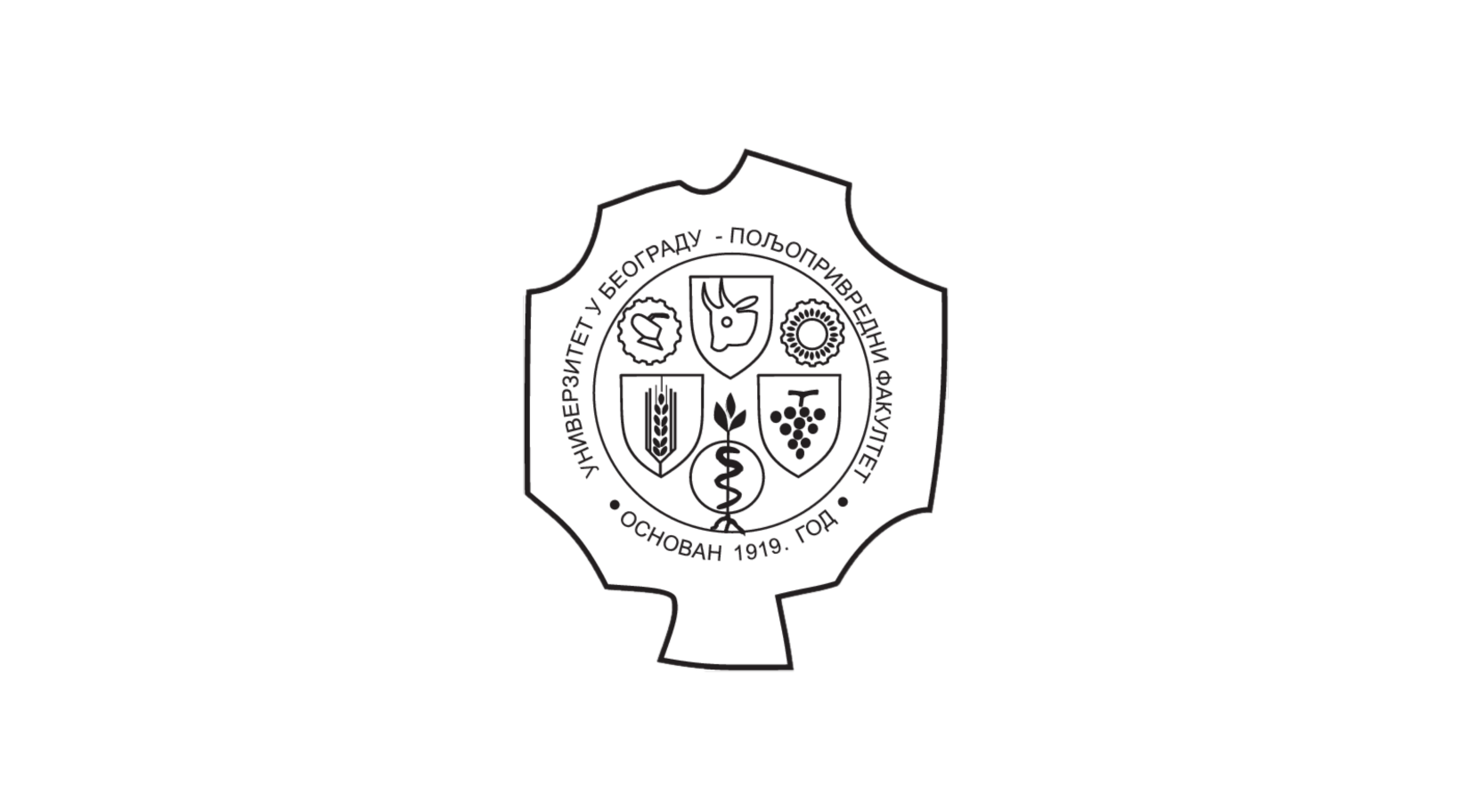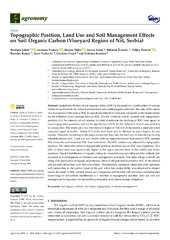Topographic Position, Land Use and Soil Management Effects on Soil Organic Carbon (Vineyard Region of Niš, Serbia)
Аутори
Jakšić, SnežanaNinkov, Jordana
Milić, Stanko

Vasin, Jovica
Živanov, Milorad
Perović, Veljko

Banjac, Borislav
Vučković, Savo

Dozet, Gordana
Komlen, Vedrana
Чланак у часопису (Објављена верзија)
Метаподаци
Приказ свих података о документуАпстракт
Spatial distribution of soil organic carbon (SOC) is the result of a combination of various factors related to both the natural environment and anthropogenic activities. The aim of this study was to examine (i) the state of SOC in topsoil and subsoil of vineyards compared to the nearest forest, (ii) the influence of soil management on SOC, (iii) the variation in SOC content with topographic position, (iv) the intensity of soil erosion in order to estimate the leaching of SOC from upper to lower topographic positions, and (v) the significance of SOC for the reduction of soil’s susceptibility to compaction. The study area was the vineyard region of Niš, which represents a medium-sized vineyard region in Serbia. About 32% of the total land area is affected, to some degree, by soil erosion. However, according to the mean annual soil loss rate, the total area is classified as having tolerable erosion risk. Land use was shown to be an important factor that controls SOC content. The vineyards... contained less SOC than forest land. The SOC content was affected by topographic position. The interactive effect of topographic position and land use on SOC was significant. The SOC of forest land was significantly higher at the upper position than at the middle and lower positions. Spatial distribution of organic carbon in vineyards was not influenced by altitude, but occurred as a consequence of different soil management practices. The deep tillage at 60–80 cm, along with application of organic amendments, showed the potential to preserve SOC in the subsoil and prevent carbon loss from the surface layer. Penetrometric resistance values indicated optimum soil compaction in the surface layer of the soil, while low permeability was observed in deeper layers. Increases in SOC content reduce soil compaction and thus the risk of erosion and landslides. Knowledge of soil carbon distribution as a function of topographic position, land use and soil management is important for sustainable production and climate change mitigation.
Кључне речи:
Land use / Management / Soil organic carbon / Topography / ViticultureИзвор:
Agronomy, 2021, 11, 7, 1438-Издавач:
- MDPI AG
Финансирање / пројекти:
- Министарство науке, технолошког развоја и иновација Републике Србије, институционално финансирање - 200032 (Научни институт за ратарство и повртарство, Нови Сад) (RS-MESTD-inst-2020-200032)
- Министарство науке, технолошког развоја и иновација Републике Србије, институционално финансирање - 200007 (Универзитет у Београду, Институт за биолошка истраживања 'Синиша Станковић') (RS-MESTD-inst-2020-200007)
DOI: 10.3390/agronomy11071438
ISSN: 2073-4395
WoS: 000675999200001
Scopus: 2-s2.0-85111390675
Институција/група
Poljoprivredni fakultetTY - JOUR AU - Jakšić, Snežana AU - Ninkov, Jordana AU - Milić, Stanko AU - Vasin, Jovica AU - Živanov, Milorad AU - Perović, Veljko AU - Banjac, Borislav AU - Vučković, Savo AU - Dozet, Gordana AU - Komlen, Vedrana PY - 2021 UR - http://aspace.agrif.bg.ac.rs/handle/123456789/5904 AB - Spatial distribution of soil organic carbon (SOC) is the result of a combination of various factors related to both the natural environment and anthropogenic activities. The aim of this study was to examine (i) the state of SOC in topsoil and subsoil of vineyards compared to the nearest forest, (ii) the influence of soil management on SOC, (iii) the variation in SOC content with topographic position, (iv) the intensity of soil erosion in order to estimate the leaching of SOC from upper to lower topographic positions, and (v) the significance of SOC for the reduction of soil’s susceptibility to compaction. The study area was the vineyard region of Niš, which represents a medium-sized vineyard region in Serbia. About 32% of the total land area is affected, to some degree, by soil erosion. However, according to the mean annual soil loss rate, the total area is classified as having tolerable erosion risk. Land use was shown to be an important factor that controls SOC content. The vineyards contained less SOC than forest land. The SOC content was affected by topographic position. The interactive effect of topographic position and land use on SOC was significant. The SOC of forest land was significantly higher at the upper position than at the middle and lower positions. Spatial distribution of organic carbon in vineyards was not influenced by altitude, but occurred as a consequence of different soil management practices. The deep tillage at 60–80 cm, along with application of organic amendments, showed the potential to preserve SOC in the subsoil and prevent carbon loss from the surface layer. Penetrometric resistance values indicated optimum soil compaction in the surface layer of the soil, while low permeability was observed in deeper layers. Increases in SOC content reduce soil compaction and thus the risk of erosion and landslides. Knowledge of soil carbon distribution as a function of topographic position, land use and soil management is important for sustainable production and climate change mitigation. PB - MDPI AG T2 - Agronomy T1 - Topographic Position, Land Use and Soil Management Effects on Soil Organic Carbon (Vineyard Region of Niš, Serbia) IS - 7 SP - 1438 VL - 11 DO - 10.3390/agronomy11071438 ER -
@article{
author = "Jakšić, Snežana and Ninkov, Jordana and Milić, Stanko and Vasin, Jovica and Živanov, Milorad and Perović, Veljko and Banjac, Borislav and Vučković, Savo and Dozet, Gordana and Komlen, Vedrana",
year = "2021",
abstract = "Spatial distribution of soil organic carbon (SOC) is the result of a combination of various factors related to both the natural environment and anthropogenic activities. The aim of this study was to examine (i) the state of SOC in topsoil and subsoil of vineyards compared to the nearest forest, (ii) the influence of soil management on SOC, (iii) the variation in SOC content with topographic position, (iv) the intensity of soil erosion in order to estimate the leaching of SOC from upper to lower topographic positions, and (v) the significance of SOC for the reduction of soil’s susceptibility to compaction. The study area was the vineyard region of Niš, which represents a medium-sized vineyard region in Serbia. About 32% of the total land area is affected, to some degree, by soil erosion. However, according to the mean annual soil loss rate, the total area is classified as having tolerable erosion risk. Land use was shown to be an important factor that controls SOC content. The vineyards contained less SOC than forest land. The SOC content was affected by topographic position. The interactive effect of topographic position and land use on SOC was significant. The SOC of forest land was significantly higher at the upper position than at the middle and lower positions. Spatial distribution of organic carbon in vineyards was not influenced by altitude, but occurred as a consequence of different soil management practices. The deep tillage at 60–80 cm, along with application of organic amendments, showed the potential to preserve SOC in the subsoil and prevent carbon loss from the surface layer. Penetrometric resistance values indicated optimum soil compaction in the surface layer of the soil, while low permeability was observed in deeper layers. Increases in SOC content reduce soil compaction and thus the risk of erosion and landslides. Knowledge of soil carbon distribution as a function of topographic position, land use and soil management is important for sustainable production and climate change mitigation.",
publisher = "MDPI AG",
journal = "Agronomy",
title = "Topographic Position, Land Use and Soil Management Effects on Soil Organic Carbon (Vineyard Region of Niš, Serbia)",
number = "7",
pages = "1438",
volume = "11",
doi = "10.3390/agronomy11071438"
}
Jakšić, S., Ninkov, J., Milić, S., Vasin, J., Živanov, M., Perović, V., Banjac, B., Vučković, S., Dozet, G.,& Komlen, V.. (2021). Topographic Position, Land Use and Soil Management Effects on Soil Organic Carbon (Vineyard Region of Niš, Serbia). in Agronomy MDPI AG., 11(7), 1438. https://doi.org/10.3390/agronomy11071438
Jakšić S, Ninkov J, Milić S, Vasin J, Živanov M, Perović V, Banjac B, Vučković S, Dozet G, Komlen V. Topographic Position, Land Use and Soil Management Effects on Soil Organic Carbon (Vineyard Region of Niš, Serbia). in Agronomy. 2021;11(7):1438. doi:10.3390/agronomy11071438 .
Jakšić, Snežana, Ninkov, Jordana, Milić, Stanko, Vasin, Jovica, Živanov, Milorad, Perović, Veljko, Banjac, Borislav, Vučković, Savo, Dozet, Gordana, Komlen, Vedrana, "Topographic Position, Land Use and Soil Management Effects on Soil Organic Carbon (Vineyard Region of Niš, Serbia)" in Agronomy, 11, no. 7 (2021):1438, https://doi.org/10.3390/agronomy11071438 . .



